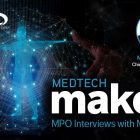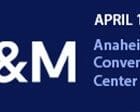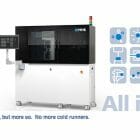The following four trends in medical device design are important matters to consider for your next product:
Wearable Medical Devices
A hot trend with consumers is also growing in health care: wearables.
From smartwatches to fitness trackers, wearables are expected to deliver $20 billion in sales in 2016, according to research firm IHS. Of that, wearable medical devices will account for 30 percent of revenues, and projections show annual upticks in revenue.
Wearable medical devices aim to improve patient health through consistent monitoring, education and awareness.
They may be able to capture oxygen levels, monitor posture and read basal body temperature, monitor heart rate, show energy consumption and output, and monitor fluid intake, among many others.
Smaller Sizes are Convenient
Wearable medical devices design considerations must shift toward being smaller, which is challenging given the inherent complexity of medical devices.
As research firm Geneva Analytics notes that smartphone technology can provide a roadmap for medical devices.
Individual medical devices could have microprocessors; high-tech sensors to monitor patient data, plus intelligently capture, store or tether data through peer-to-peer communication software such as Bluetooth and WiFi; and be non-obtrusive for the end user.
The ‘Look’
Users — whether clinicians or patients — are seeing and experiencing sleek technology in their personal lives. Medical devices need to offer an aesthetically pleasing look.
According to industry research by Denmark creative firm WILDDESIGN, medical device design is shifting away from sterile diagnostic tools to something more comfortable in color and materials — similar to a household item.
Patient Experience
A positive patient experience is an increasingly vital element while technological advancements and design standards continually improve. Several finalists in the Medical Design Excellence Awards (MDEA) had devices designed with the patient experience in mind.
Some examples include a dental device that can make painful root canal procedures shorter, to a handheld device that replaces the jarring puff-of-air-in-your-eye for glaucoma test. A positive patient experience, whether it be pain reduction, shorter procedure times or stimulating a faster recovery process, enhances patient experience.
For an example of how NPI/Medical positively impacted the design of a urinary catheter created to make self-catheterization easier, read our case study.
















